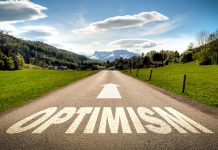In the midst of the COVID-19 pandemic, there are specialists who are not surprised by this crisis, and believe that in the future we could be facing other pandemics if we fail to fix the mistakes that led to an increase of animal to human pathogen transmission.
Rather than a nuclear war, what we should fear in the coming decades is a highly contagious and deadly virus, said Bill Gates in 2015. Last year, the World Health Organization warned that “the problem is not if, but when” we will face a flu pandemic, describing a global plan to fight viral diseases. In fact, in 2018, the WHO reviewed the Blueprint List of priority diseases, and added “Disease X” to the list, among illnesses such as Ebola, Middle East Respiratory Syndrome (MERS-CoV) and Severe Acute Respiratory Syndrome (SARS)—thus recognising that an international epidemic could be generated by a pathogen currently unknown to cause human disease.
Peter Daszak, one of the experts who coined the term, listed the characteristics that the WHO assumed Disease X would have: it would be caused by a virus originating from animals, emerging somewhere on the planet where economic development drives people and wildlife together, it would spread silently but quickly and would be easily confused with other diseases at the beginning of the outbreak. In his article, published in February 2020, Daszak concluded that COVID-19 is Disease X.
Given that our ecological footprint has expanded, pandemics have become more likely, the expert writes, comparing the pandemic to terrorist attacks: we know roughly who the perpetrators are, but we cannot predict when the next attack will take place.
The pandemic we are facing now should come as no surprise, says Aaron Bernstein, director of the Centre for Climate, Health and the Global Environment at Harvard University. In fact, it comes as a result of the aggressive way in which man interacts with nature. What we should know is that there is no such thing as a free lunch in nature. We swim in a common germ pool with other animals. “If we stretch the fabric of life too far, things pop out of that germ pool and they land on us,” Bernstein said.
Zoonotic diseases and their high cost
We already know that about 75% of emerging infectious diseases and 60% of known infectious diseases are zoonotic (transmitted from animals to humans), causing one billion diseases and millions of deaths each year. In fact, 16% of deaths worldwide are caused by infectious diseases.
In the past century we have dealt with at least six coronavirus epidemics, says Inger Andersen, executive director of the UN Environment Program, stressing that in the last 20 years alone, the damage caused by zoonotic diseases has risen to $100 billion. In 2003, the SARS outbreak caused $25.3 billion in economic losses in China, reducing East Asia’s gross domestic product by 2%. Other outbreaks of zoonotic diseases, such as Ebola, SARS and bird flu, have caused global economic losses. It is estimated that in the next two years, COVID-19 will cost the global economy $9 billion.
Studies show that in addition to the negative impact they have on the economy, zoonotic diseases also affect diplomatic relations between countries and undermine efforts to protect biodiversity.
Moreover, human health, animal health and ecosystem health are interdependent. About 2 million people die each year in economically underdeveloped countries because of neglected zoonotic diseases such as anthrax, rabies or bovine tuberculosis, says Andersen.
How did we get here?
In the absence of actions to protect the environment and wildlife, zoonotic diseases, already on the rise, will continue to surge, warns a report by the United Nations Environment Program in collaboration with the International Livestock Research Institute (ILRI). Unsustainable agriculture, wildlife trade, growing demand for animal protein and the climate crisis are among the causes of diseases such as COVID-19, the report says.
Animal trade
Of all the risk factors associated with infectious diseases, global wildlife trade appears to be the least manageable, as noted by the authors of a 2005 study. According to estimates from two decades ago, 40,000 primates, 4 million birds, 640,000 reptiles and 350,000 tropical fish (live animals only) are traded in a single year.
All these animals go through crowded centres (in some markets the animals are slaughtered on the spot, per the customer’s request), come into contact with dozens of other species and a large number of people, before being sold or released into the wild, for various reasons—for example, because the owners no longer want them as pets.
More than 35 infectious diseases developed between 1980 and 2005. As an example, the HIV virus probably originates from the SIV virus (simian immunodeficiency virus) hosted by chimpanzees, with its transmission to humans having taken place in the first decades of the past century, through the consumption of chimpanzee meat.
Decreasing contact between species is a better approach than trying to eradicate pathogens or the wild species that harbour them, researchers say. A 2003 study showed that closing bird markets in Hong Kong one day a month in order to be cleaned, reduced the rate of bird flu virus (H9N2) in market birds.
Even though the coronavirus pandemic has brought illegal wildlife trade to the forefront, there are significant risks associated with the massive legal trade, says Jonathan Kolbys, a policy specialist who regulates international wildlife trade.
Every imported live animal poses a risk of disease to wild animals in the importing country, but also to humans and domestic animals, Kolbys points out, recalling that according to WHO data, 60% of known human diseases come from animals.
The amphibian trade has contributed to the spread of a deadly disease, chytridiomycosis, caused by Batrachochytrium dendrobatidis, a fungus that stimulates an abnormal amount of keratin in frogs and other batrachians. A study published last year in the journal Science showed that the fungi Batrachochytrium dendrobatidis (Bd) and Batrachochytrium salamandrivorans (Bsal) caused the decline of 501 species of amphibians, meaning one in 16 species known to scientists.
Chytridiomycosis is the first known disease that can infect hundreds of species at once and has already spread to many regions of the world, being the first case of a global epidemic to affect wildlife, writes Kolbys. People have never been hit by a large scale pandemic such as the one that affects amphibians—not even the 14th century plague or the 1918 Spanish flu have affected any beings other than humans, although the losses have been massive. The challenge the expert is envisioning is imagining a future pandemic that would affect hundreds of the world’s 5,000 species of mammals, including humans.
A wildlife health law is needed in the United States to control the spread of pathogens. However, the lack of interest in the issue stems from the false belief that imported diseases that do not pose an immediate threat to public health do not threaten economic interests either, said Priya Nanjappa, director of Conservation Science Partners.
Deforestation and unsustainable agriculture
Nature is essential for human survival, so we should give wildlife as much space as possible. However, human activity has altered almost 75% of the ice-free surface of the earth, leaving a very small perimeter of untouched space, with wild fauna and flora.
Since 1990, 420 million hectares of forest have been deforested, three times the size of South Africa.
In 1997 in Indonesia, a rainforest area the size of Pennsylvania was burned down so that the land could be used for agriculture. Wrapped in thick clouds of smoke, the trees bore no more fruit, and the fruit-bats had to look elsewhere for food. Because fruit-bats were harbouring a deadly virus, after they invaded Malaysian orchards, pigs in the region became ill, probably after eating fruit already contaminated by the bats. Farmers were affected as well. Over the next two years, 265 people suffered severe inflammation of the brain, with 105 deaths (a 40% fatality rate). It was the first time people have been exposed to the Nipah virus, which has since caused several outbreaks in Southeast Asia.
Over the past two decades, more and more evidence has been gathered that deforestation is creating favorable conditions for the transmission to humans of pathogens that are usually limited to wildlife, writes Katarina Zimmer in National Geographic, recalling that experts fear that future pandemics could overtake us from the dwindling forests of the planet.
Between 2003 and 2015, an annual 10% increase in deforestation led to a 3% increase in malaria cases, according to an analysis published in the Proceedings of the National Academy of Science, which focused on deforestation in the Amazon basin.
The increase in the demand for animal protein is at the root of the intensive and unsustainable growth of animal farming, according to the aforementioned UN report. Over the last 50 years, meat production has increased 260% globally and Southeast Asia has been the region with the fastest growth in meat consumption in the last four decades. Intensive animal farming is in itself a danger for the spread of infectious diseases, given the high concentration of animals in a confined space. More meat on the plate also means an increase in global carbon emissions, and also an increased consumption of natural resources to obtain it.
In a recent article in the journal Neuroepidemiology, Professors David Wiebers and Valerie Feigen conclude that the COVID-19 pandemic is a wake-up call, showing that we should gradually abandon intensive animal farming, turning to other sources of protein. Intensive animal farming “should be discontinued worldwide for the sake of animals, humans, and the environment,” the authors say.
If deforestation, intensive animal farming and wildlife trade are the matches that ignite pandemic fires, the fuel that sustains the fire is globalisation and the growing concentration of people in cities, says Aaron Bernstein. An example is the global spread of SARS-CoV-2, very unlikely half a century ago, when there was not even an airport in Wuhan.
We need a new vision
“Zoonotic pathogens do not typically seek us out nor do they stumble onto us by pure coincidence“. It’s about the opening of several channels of access to viruses from the animal world, through an aggressive transformation of the ecosystems, writes journalist Ferris Jabr in an article in The New York Times, using fascinating examples, some little known, to support this idea.
After two decades of studying ticks, ecologists Felicia Keesing and Richard Ostfeld found that increased biodiversity reduces the size of tick populations the following year and thus the risk of ticks that carry the bacteria that causes Lyme disease spreading. Finally, Ostfeld and Keesing realised that this conclusion can be extended: “The best hosts for many diseases are often the very species that thrive when humans disturb habitats and diversity declines (…) What we thought was a peculiarity of the Lyme disease system was happening all over the planet.”
There are many things we need to do to prevent new pandemics, starting with the analysis of causal factors, but perhaps our greatest need is to change our perspective, writes Ferris Jabr. We extract orchids from the swamps and bring them to the pots on the windowsill, hunt animals or force them to live in captivity and we do it simply because we are convinced that we are performing in a play in which we are the lead performers, and nature is only the setting, says the journalist. “Viruses and microorganisms expose the fallacy of our tyrannical choreography”, forcing us to realise that, from the perspective of pathogens, we are the landscape.
COVID-19 is just a warning that we cannot continue like this. No plant or animal in the wild depends on man to survive, but the inverse is not true. So, the more we destroy the natural world, the closer we get to the point where we “literally change earth into a spaceship in which our hands are on the controls, moment by moment, of all the necessities of human life”, writes biologist Edward Wilson. The alternative, says Wilson, is far easier: let the planet breathe at its own pace, grateful for the millions of species that help us, willingly, without levying taxes.
Carmen Lăiu is a writer for ST Network and Semnele timpului.



















